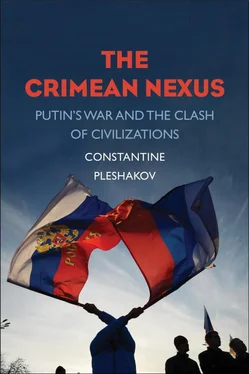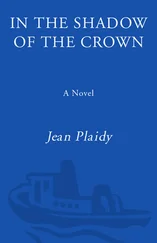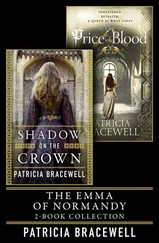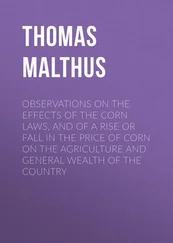The Ottoman Empire’s government, known as the Sublime Porte, is largely absent from the twenty-first-century Western conversation about Crimea, Russia, and Ukraine, and this is unfortunate because its impact on the area was no less significant and lasting than Kiev’s or Moscow’s. Not content with mere conquest of the Black Sea steppe, the Ottomans aspired to be a transforming economic force in the area. Imperial overstretch forced the abandonment of the most daring (and expensive) projects, but in the mid–sixteenth century the empire attempted to build a canal connecting the Don and Volga rivers—and thus two seas, the Black and the Caspian—a bold engineering venture that was not accomplished until four centuries later, by the Soviet Union, and was deemed so amazing even in 1951 that Stalin asked Sergei Prokofiev to write a celebratory symphony for the occasion. [14] Lord Kinross, Ottoman Centuries (New York: Harper, 1979), 262–263.
The Ottomans deftly developed the urban structure and trade routes they had inherited. Kaffa became the coastal Ottoman capital, and grew into a thriving trade hub, routinely referred to as Kuchuk Stamboul—Little Istanbul. With a population ranging between 70,000 and 100,000, Kaffa ranked as the eighth-largest city in the Ottoman Empire, after Istanbul, Cairo, Aleppo, Damascus, Bursa, Adrianople, and Salonika. As practiced in other parts of the empire, in Kaffa the Ottomans tolerated the presence of other ethnic groups as long as they remained economically useful—Jews, Italians, Greeks, and the largest minority, Armenians, reportedly maintaining more than twenty churches in the city. [15] “Opisanie Kryma (Tartariae descriptio) Martyna Bronevskogo,” Zapiski Odesskogo Obshchestva Istorii i Drevnostei, vol. 6 (1867), 333–367; Keppen, Krymskii sbornik , 27–28; Williams, The Crimean Tatars , 56.
The capital of the khanate, Bakhchisaray, was by comparison a sad little affair. The entrance to the palace of the khans carried the Genghizid dynastic symbol, the tamgha trident, but the khanate could not live up to the dynasty’s legacy. The only port the khanate was allowed to keep was the smallish Goezleve (Yevpatoria) on the underdeveloped western coast, its sole adornment the graceful Juma Jami Mosque, designed by the Ottoman architect of genius Mimar Sinan at the peak of the khanate’s might. A miniature variation on the Suleymaniye Mosque in Istanbul and modest compared with Sinan’s great works, the Juma Jami still supplied the city with a distinguished silhouette, its dome identifiable fifteen miles off. [16] Henry A. S. Dearborn, A Memoir on the Commerce and Navigation of the Black Sea, and Trade and Maritime Geography of Turkey and Egypt (Boston: Wells and Lilly, 1819), vol. 2, 16; Williams, The Crimean Tatars , 53.
In the twentieth century, when Crimean Tatar intellectuals were reinventing their nation, the khanate’s statehood became a principal issue. Having a fully independent state in one’s past was viewed as indispensable to a national creation myth. This resulted in a lively revisionist discourse that gave rise to widely divergent descriptions of the relationship between Bakhchisaray and Istanbul. According to most historians, the Giray dynasty that ruled the Crimean Khanate “recognized Ottoman suzerainty” and served as Istanbul’s “vassals”; but in the nationalists’ view, the “two states existed in a tense, respectful alliance,” the Giray khans “more allies than subjects,” and the khanate had “partial independence” while enjoying the “protection of the Ottoman sultans, who regarded it as a valuable bulwark against the Russians.” [17] Nicholas V. Riasanovsky and Mark D. Steinberg, A History of Russia (New York: Oxford University Press, 2011), 96; John T. Alexander, Catherine the Great: Life and Legend (New York: Oxford University Press, 1989), 129; Kinross, Ottoman Centuries , 262; Simon Sebag Montefiore, Potemkin: Catherine the Great’s Imperial Partner (New York: Vintage, 2005), 24; Alan W. Fisher, The Crimean Tatars (Stanford, Calif.: Hoover Institution Press, 1987), 14; Peter Hopkirk, The Great Game: The Struggle for Empire in Central Asia (New York: Kodansha, 1992), 15.
In the language of modern political science, the khanate most closely fits the definition of a “client state.” On one hand, Bakhchisaray minted its own coins and maintained diplomatic relations with Russia and Poland. On the other, each Genghizid claiming succession rights traveled to Istanbul to be approved and anointed by the Ottoman sultan, the Sunni Caliph. When required by Istanbul, Crimean cavalry fought for the sultan throughout the region, making a critical contribution in many battles, including the sieges of Vienna in 1529 and 1683. The Ottoman coastal fortresses, originally meant to keep an eye on the Tatars, also guarded Crimea from the occasional Russo-Ukrainian amphibious raids. [18] Fisher, The Crimean Tatars , 14; Williams, The Crimean Tatars , 48.
The Tatar core of the khanate consisted of three groups: Nogai (Kipchak) nomads, Tat mountaineers, and Yaliboyu coastal dwellers. An eighteenth-century British visitor, Maria Guthrie, described three different “races of men” on the peninsula. The Nogai were “distinguished by high cheek bones” and looked exactly like the “Huns of ancient authors, who committed such horrible ravages in Europe in old times.” The Tat had “round, and rather ruddy faces, and stout well-made bodies,” while the Yaliboyu were “distinguished by a dark complexion and a rather longish face, with features much more resembling the European” than the “frightful” Huns. [19] Guthrie, A Tour , 213–214.
In Turkic languages, “Tat” refers to conquered people, and in the hierarchy of the khanate Tats sat the lowest, with a special cabinet minister of the khan, “Lord of the Tats,” regulating their affairs. [20] Williams, The Crimean Tatars , 26.
The Yaliboyu on the littoral were understandably the closest to the Ottomans, and their upper classes had absorbed the culture of Turkish Anatolia. The most numerous group, the nomadic Nogai in the north, made up the bulk of the khanate’s army, and the incessant raids plaguing Ukraine, Russia, and Poland were more Nogai than “Tatar.” [21] Ibid., 29, 58.
The economy of the khanate was based on pillaging and the slave trade. As the raids pursued material benefit more than anything else, they were executed not only by the khan’s army but also by troops loyal to individual aristocrats ( beys ). In addition to sustaining the state bursary and the aristocracy, they also served to weaken and destroy Slavic settlements on the steppes. One of the most famous campaigns was Khan Devlet Giray’s attack on Moscow in May 1571, when his troops burned down everything in the Russian capital except for the Kremlin walls, which were made of brick. The Russian tsar at the time was none other than Ivan the Terrible. Remembered as a successful empire builder, he was powerless against the khanate’s cavalry. [22] Isabel de Madariaga, Ivan the Terrible: First Tsar of Russia (New Haven: Yale University Press, 2005), 266; Williams, The Crimean Tatars , 49–50.
Kaffa became the largest center of slave trading in Eastern Europe. A Polish historian estimates that Poland lost a million people to Tatar raiders between 1550 and 1694. A Soviet historian argued that eastern Ukraine lost a hundred thousand a year. [23] Williams, The Crimean Tatars , 51.
The peninsula’s agriculture was supported in the mountain valleys by Tats. Finance, trade, and crafts were in the hands of Greeks, Armenians, and Karaites living mostly on the Ottoman littoral. [24] Descriptions of the Crimean Khanate can be found in a number of travelogues: Evliyá Efendí; Robert Dankoff and Sooyong Kim, eds., An Ottoman Traveller: Selections from the Book of Travels of Evliya Celebi (London: Eland, 2011); François Tott, Mémoires du baron de Tott sur les Turcs et les Tartares (Paris, 1786).
Читать дальше












